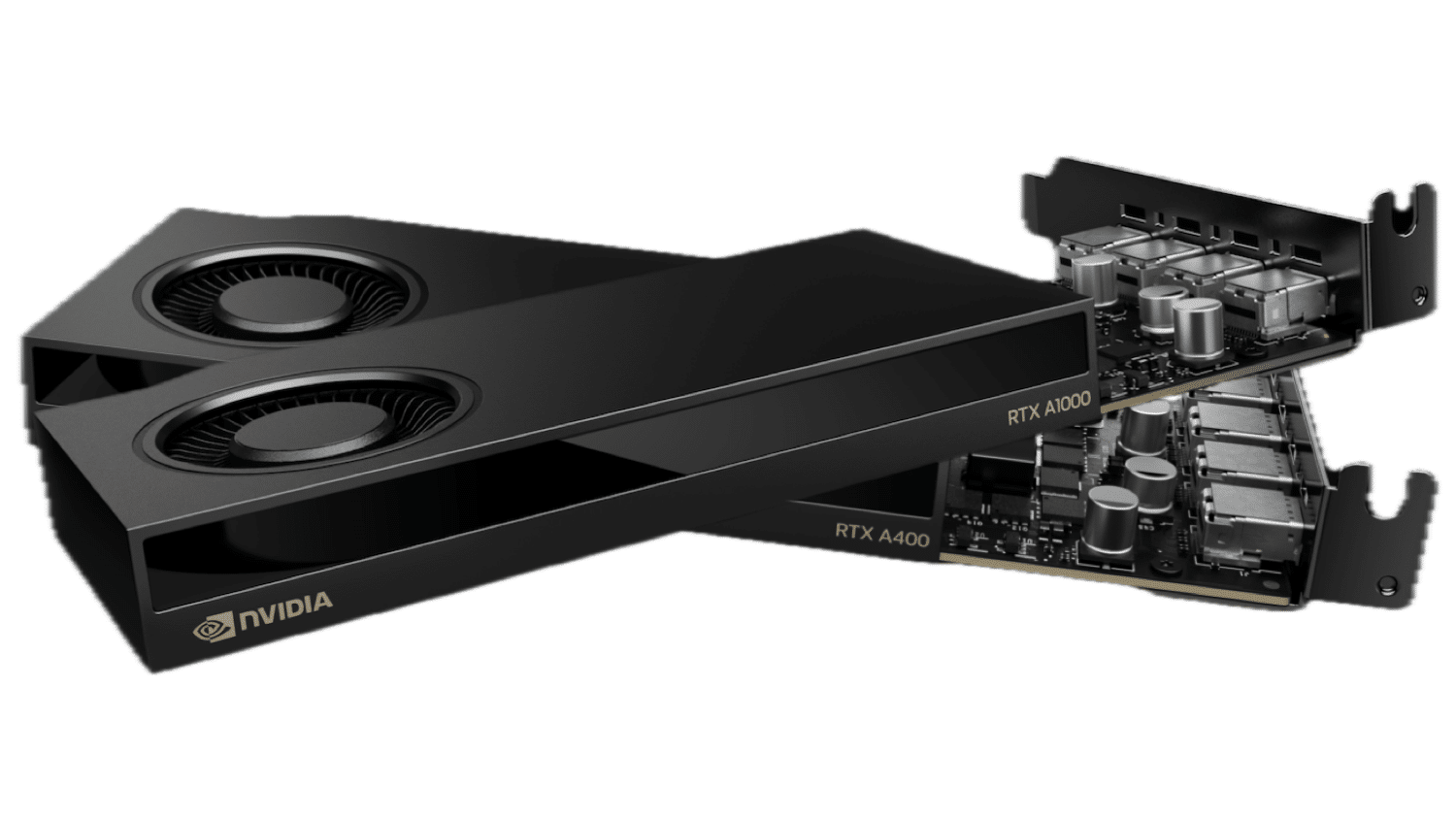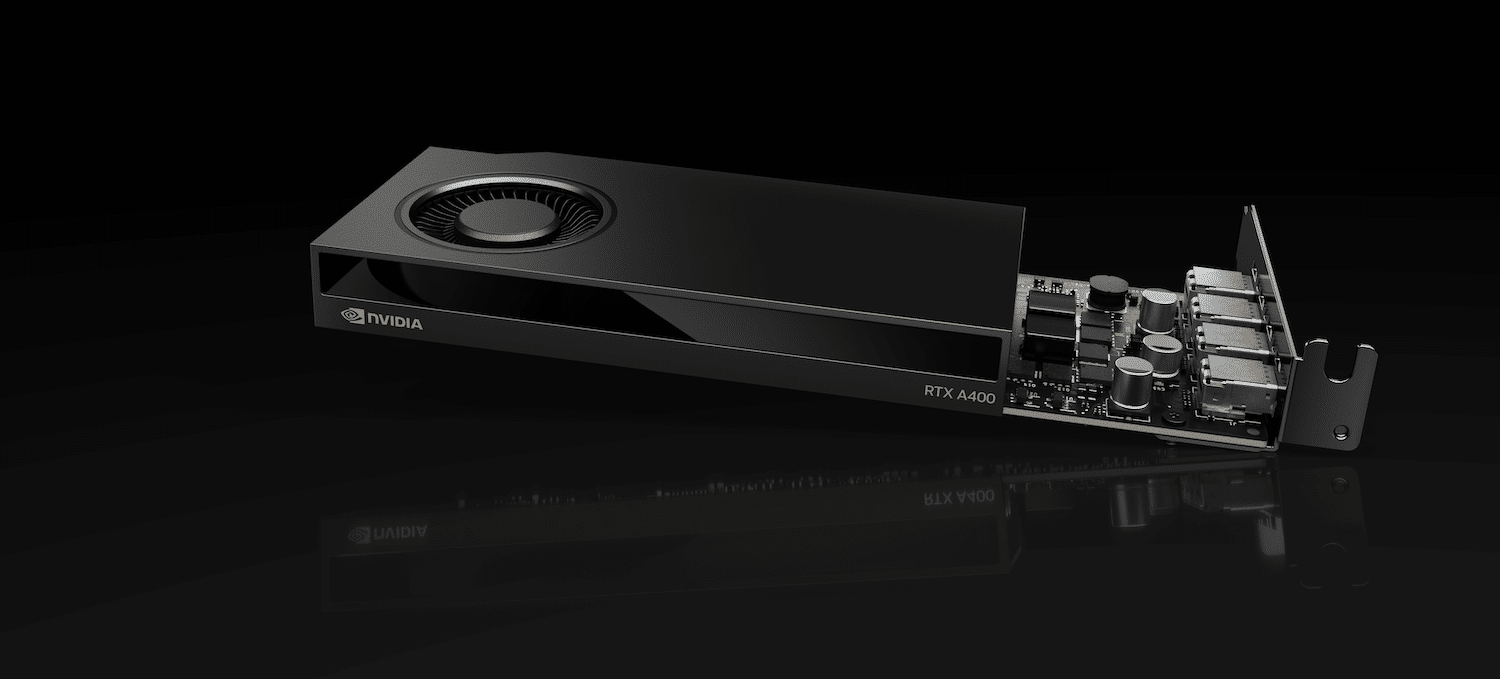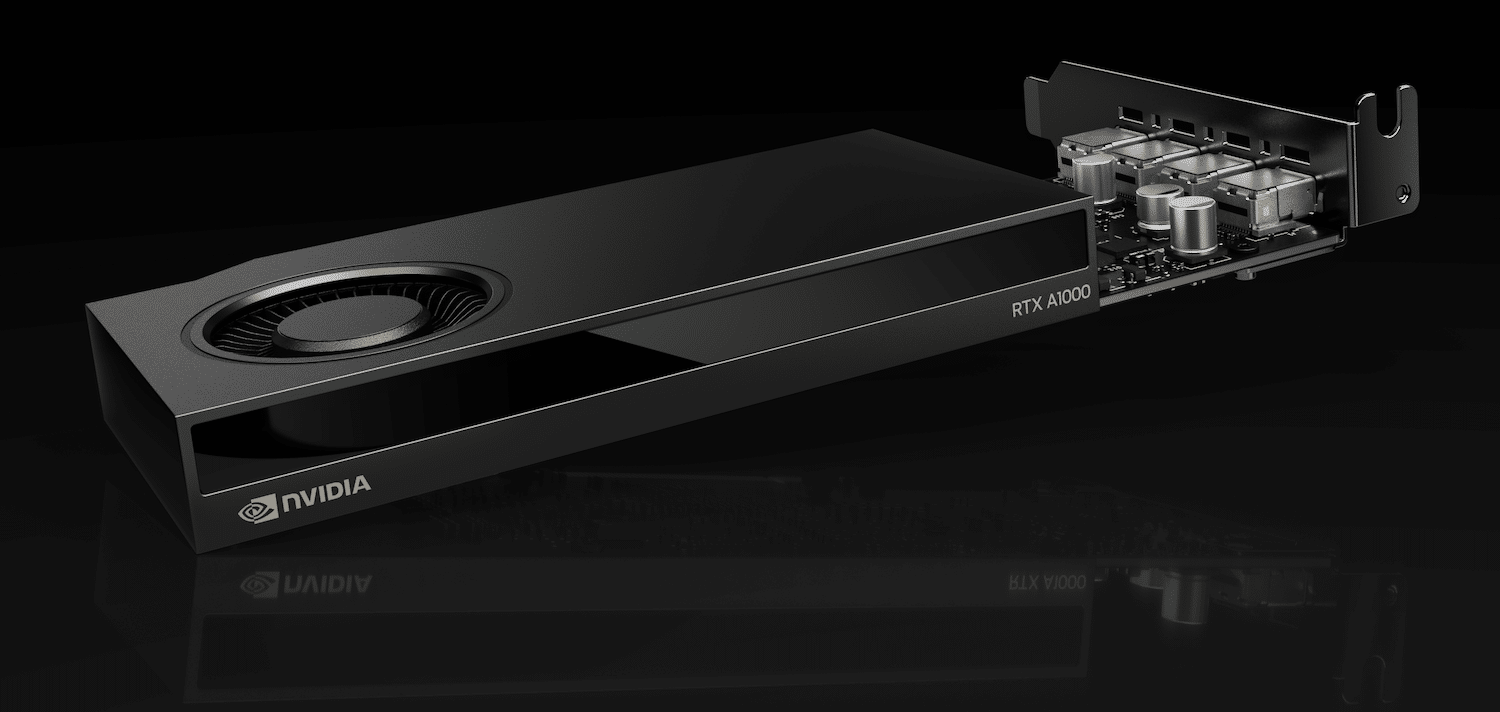NVIDIA, the graphical processing unit titan, has just unveiled its latest innovations with the release of the RTX A400 and A1000 GPUs. These new additions to the NVIDIA family are built on the robust Ampere architecture, promising to elevate AI-powered design and productivity workflows in workstations.

Designed for professionals across various industries, the RTX A400 and A1000 GPUs streamline complex computing tasks and directly introduce real-time ray tracing and generative AI tools to users’ desktops. With their release, NVIDIA continues to enhance performance standards and efficiency in professional graphics.
NVIDIA A400 and A1000 Specifications

NVIDIA RTX A400
| Specification | RTX A400 | RTX A1000 |
|---|---|---|
| Architecture | NVIDIA Ampere Architecture | |
| Foundry | Samsung | |
| Process Size | 8N NVIDIA Custom Process | |
| Transistors | 8.7 billion | |
| Die Size | 200 mm2 | |
| CUDA Parallel Processing cores | 768 | 2304 |
| NVIDIA Tensor Cores | 24 | 72 |
| NVIDIA RT Cores | 6 | 18 |
| Single-Precision Performance | 2.7 TFLOPS | 6.74 TFLOPS |
| RT Core Performance | 5.3 TFLOPS | 13.2 TFLOPS |
| Tensor Performance | 21.7 TFLOPS | 53.8 TFLOPS |
| GPU Memory | 4 GB GDDR6 | 8 GB GDDR6 |
| Memory Interface | 64-bit | 128-bit |
| Memory Bandwidth | 96 GB/s | 192 GB/s |
| Max Power Consumption | 50W | 50W |
| Graphics Bus | PCI Express 4.0 x8 | PCI Express 4.0 x8 |
| Display Connectors | mDP 1.4a (4) | mDP 1.4a (4) |
| Form Factor | 2.7″ (H) x 6.4″ (L) Single Slot | |
| Product Weight | 140 g (Low Profile Bracket) 146 g (ATX Bracket) |
|
| Thermal Solution | Active Fan | |
| NVENC | NVDEC | 1x | 1x (+AV1 decode) | 1x | 2x (+AV1 decode) |
The NVIDIA RTX A400 and A1000 GPUs, built on the Ampere architecture, showcase some impressive features tailored for professional use in design and productivity workflows. Here’s a detailed comparison and analysis of their specifications, highlighting their potential use cases and target segments.

NVIDIA RTX A1000 GPU
CUDA Cores and Performance:
- RTX A400: Features 768 CUDA cores. This lower core count, combined with a single-precision performance of 2.7 TFLOPS, positions the A400 as a more entry-level offering within NVIDIA’s professional GPU lineup. It’s suitable for tasks requiring moderate computational power, such as basic graphic design or entry-level 3D modeling.
- RTX A1000: Boasts 2304 CUDA cores and delivers a single-precision performance of 6.74 TFLOPS. This significant increase in cores and computational throughput makes the A1000 a powerhouse for more demanding applications, including advanced 3D rendering, detailed architectural simulations, and intensive video editing.
Unlocking New Levels of Performance
The RTX A1000 brings advanced AI and ray-tracing capabilities to the 1000 series for the first time. Equipped with 72 Tensor Cores and 18 RT Cores, the RTX A1000 delivers more than triple its predecessors’ generative AI processing power. This boost significantly enhances professional workflows, from computer-aided design (CAD) to 4K video editing, providing up to a 300% speed increase in rendering tasks.
Both GPUs have a single-slot design and maintain a low power consumption of just 50W, making them powerful yet energy-efficient solutions for compact workstations.
Closing Thoughts
The RTX A1000 is available now through distributors like PNY and Ryoyo Electric, while the RTX A400 is slated for release starting in May, with broader availability expected by summer. These launches solidify NVIDIA’s standing as a leader in GPU technology and demonstrate its commitment to advancing the capabilities of modern workstations.
As industries continue to evolve, the reliance on robust, efficient GPUs like the NVIDIA RTX A400 and A1000 will undoubtedly become more pronounced, pushing the boundaries of what’s possible in professional and creative environments.




 Amazon
Amazon